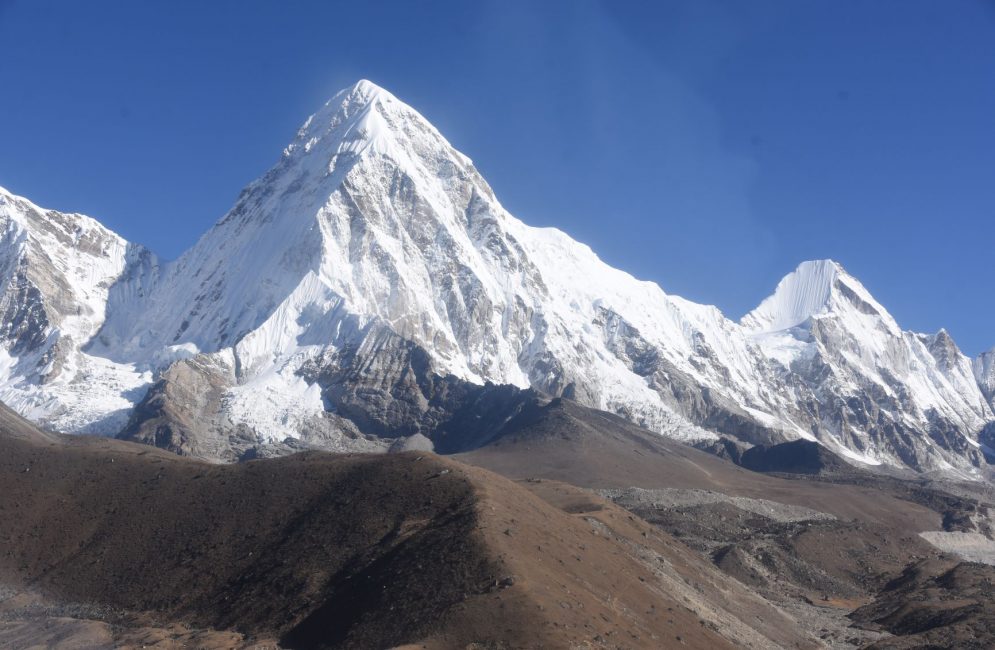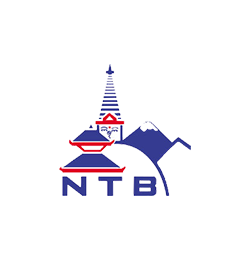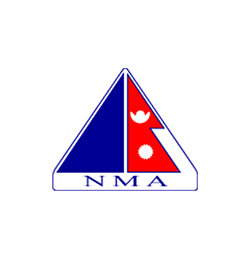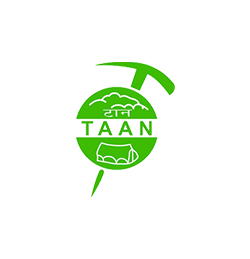
Am I fit enough to trek to Everest Base Camp?
The trek to Everest Base Camp is extremely challenging. To prepare for the Everest Base Camp trek, you need to be in good physical shape in order to enjoy the experience and to succeed in reaching base camp. Some itineraries and guidebooks recommend you start preparing 5 to 6 months in advance. This will depend on your current level of fitness. If you are already-fit and active then you may not require this much preparation time. It is crucial to be in good physical shape before you go. You cannot use the walk itself as a shortcut to getting fit.
I started my preparation 3 months prior to my trip. I knew if I started 6 months prior I would lose momentum and probably have to start all over again anyway. It is a personal choice. You need to do as much preparation as it takes for you to feel confident to trek all day, every day, for around 10 to 12 days with lots of uphill and downhill while wearing a small pack (if you have a porter) or a very large pack (if you don’t). You will hear the phrase “Nepali flat” a lot on the trek to base camp. It means lots of up and down.
My training largely consisted of gym visits around 3 times a week for 30 minutes of cardio including short bursts of high intensity and around 20 minutes of weights along with bushwalks on most weekends. The walks started short, on flat ground and built up over time to longer walks with more up and down.
3 months before my trek I prepared a training plan. I had a list of walks gradually ascending in length and difficulty. I didn’t follow it at all. Sometimes other things came up or it was too hot and I didn’t want to risk getting heatstroke. Don’t stress too much if your preparation doesn’t go exactly according to plan. The important thing is to be fit and healthy and in the habit of walking a lot.
When the weather was too poor for bushwalking I did a couple of stair sessions where I put on my boots and went up and down the 11 flights of stairs in my apartment building over and over and over. This was partly to break in my boots but also to really give my calf muscles a workout and get used to going up and down constantly.
I had planned to do the Wentworth Pass walk in the Blue Mountains, west of Sydney, because it’s the same walk Lincoln Hall did as part of his preparation for his 2nd summit attempt on Everest. Sadly the track was closed in the months leading up to my trek.
In addition to being good physical preparation, bushwalking will also give you the chance to test out all your gear in a similar setting in which you’ll use it. This is your opportunity to decide what you really need to carry with you all day, such as camera equipment.
Am I too old to trek to Everest Base Camp? Am I too young?
My guide reported his youngest client was an 11-year-old boy and the oldest was 75 years of age. I was 36 when I did the trek and from what I saw, I would say there were more people older than I was than younger on the trail, although not all were going to Everest Base Camp. The oldest person to summit Everest was 80 years of age, so if you are in good health there should be no reason you can’t make it to base camp with adequate preparation. Please note that some tour companies have minimum age limits, so make sure you check this in advance. Intrepid for example have a minimum age of 15.
Do I need mountaineering experience to reach Everest Base Camp?
No. There is no climbing required to reach Everest base camp. You will not need to use ropes or ice axes or crampons. It is just walking. Lots and lots of walking.
Packing list
Here is a list of everything I took with me and a few things I wish I had taken. Sometimes I have included the reasons for packing an item, others are self-explanatory. If you’re traveling with the support of a porter, they will carry most of your stuff in an expedition or duffel bag. You will carry only your daily essentials while you are walking. Remember that your porter won’t walk with you so you won’t be able to retrieve anything from the duffel bag until you reach your accommodation for the night. Some tour companies will provide a duffel bag, others will require you to do so. You can buy reasonable quality duffel bags quite cheaply in Kathmandu. Porters are allowed to carry a maximum weight limit of 30 kilograms (around 66 pounds) shared between two trekkers, so you can take up to 15 kilograms (33 pounds) per person.
Clothing
- Boots and spare boot laces
This is one thing you absolutely should not buy in Kathmandu at the start of your trek. You need to buy your boots months in advance so you have adequate time to wear them in. I have a pair of Salomon X-Ultra boots which I have been very happy with.
- Socks
I took 4 pairs of thick hiking socks in colours so bright they must be a safety feature. I wore a few pairs on rotation and kept 1 pair clean for sleeping in.
- Dust mask or neck gaiter
The trail gets very dusty so you will need a face mask or lightweight neck gaiter to avoid breathing in all that dust. There are plenty available for sale in Thamel (the tourist district of Kathmandu) that you wear around your neck and pull up to cover your nose and mouth. I didn’t have one on the first trek thinking I could use a bandana tied around my face as a substitute but that did not work at all. It was too thick to breathe through and fell down anyway.
- Down jacket
Many tour companies will loan you a down jacket for the duration of the trek. If not, you can take your own or rent or buy one in Kathmandu. Your tour guide should be able to recommend a reliable shop if you want to rent or buy in Kathmandu. Your down jacket will be one of the most essential items of your trip so it is worth investing in something high quality.
- Fleece jacket
I wore a thick fleece jacket under my down jacket on most days. Once I warmed up from walking I often took off the down jacket and just wore the fleece.
- Rain jacket
If you are travelling with a tour company and they provide a down jacket I suggest waiting to buy a rain jacket in Kathmandu so you can test if it will fit over the down jacket. The rain jacket I packed from home was too small to fit over the bulky down jacket I was loaned so I had to buy a new rain jacket in Kathmandu.
I recommend taking your rain jacket in your day pack to start the trek. I had mine packed in the duffel bag for the flight to Lukla. I could have used it a short time later when it started to rain a little but the porter had already gone on ahead with the duffel bag and my rain jacket.
- Rain pants
I took a cheap pair of rain pants. I did not need them at all but I still recommend taking them. If you get wet and cold you could be in trouble very quickly.
- Beanie
I took my favourite beanie from home but there are plenty of shops in Kathmandu selling beanies.
- Thermal underwear
I took 2 sets of thermals – long sleeve merino wool tops and bottoms. I would wear one top during the day and change into the other one to sleep in. I tried wearing the thermal pants to walk in but I found I went from warm to overheated very quickly. Whether you try walking in thermal pants will depend on personal preferences and the conditions. I recommend changing into clean clothes soon after you arrive at your teahouse. If you wait until bedtime you will have cooled down a lot and won’t feel like undressing.
- Trekking pants
I bought mine in Kathmandu. I paid around US$15.
- Gloves
I wore lightweight merino glove liners with warmer gloves on top. That way I could take off the warmer gloves to work the camera but still have some protection against the cold.
- Walking shoes to wear around the tea houses
Some teahouses will provide crocs to wear around the teahouse (with your hiking socks for warmth, stylish!). I took a lightweight pair of runners so I knew I would have a back-up pair of shoes I could still trek in if anything went wrong with my boots.
- Tracksuit pants
These are to wear around the lodges and possibly to sleep in.
- T-shirts
- Underwear
- A clean set of clothes to change into at the end of the trek
It’s a wonderful feeling to return to Kathmandu at the end of the trek, have a long hot shower, put on clean clothes and not walk anywhere for a while.
Accessories
- Hydration bladder
One of the best things you can do to limit the effects of high altitude is to stay hydrated. I find the hydration bladder works well because it is easy to sip on constantly and I don’t have to stop and fumble for a water bottle. Mine is a 2-litre Kathmandu brand.
- Water bottles – 2 x 1 litre bottles
You will need to enough water bottles to carry 2 or 3 litres of water.
If you are taking a hydration bladder you should also take a water bottle. The hose of the hydration bladder can freeze in the cold at high altitude leaving you without access to your water. Using the bottle is also an easy way to measure the correct amount of water if you’re using purification tablets.
- Trekking backpack/Day bag
This is the bag you will carry with you all day (assuming you have a porter carrying everything else). It needs to be large enough to carry your water, snacks, down jacket, camera, money and anything else you may want while trekking. Remember, your porter won’t be walking with you so anything you will want during the day has to go in this bag. I took my Kathmandu ‘Anabatic’ 30 litre hiking pack with cushioned shoulder straps and waist strap.
- Sleeping bag
You will need a four-season down sleeping bag. Many of the tour companies will provide this for you. You can also buy or rent these in Thamel.
- Sleeping bag liner
This is a very small liner you put inside your sleeping bag which adds a little bit of extra warmth. It also reduces the ‘yuck’ factor if you are sleeping in a borrowed or rented bag.
- Trekking poles
You can buy these in Thamel for around US$15. I did this on both of my treks and the poles lasted the distance.
- Ear plugs
For a little peace and quiet while trying to sleep in the teahouses. All the building materials need to be carried up the mountain so the walls are very thin. The noise from the room above mine in Deboche sounded like another trekker would fall through their floor/my ceiling any minute.
- Hat/Beanie
I took a hat and beanie but it was cold enough that I wore the beanie almost exclusively. If you might do the same you’ll need to put on sunscreen every day to protect your skin.
- Sunglasses
These need to be high UV protection. Something that wraps right around your face is ideal to give you protection on all sides.
- Small pocketknife/Swiss army knife
I took mine with me though I never used it. I just felt better to know I could attend to blisters or anything else minor like that.
- Tissues/Handkerchief
The cold air can make noses run and head colds often do the rounds among trekkers.
- At least 2 passport-size photographs
You will need one for your trekking permit. The other is a back-up in case you lose your passport. You may also need one if you buy a SIM card in Nepal, although some stores are able to take a photo for you.
- Headtorch with extra batteries
You will need this in case you are still out walking after dark or to find your way around lodges at night. Just be careful to angle it down when inside so you don’t blind your fellow trekkers.
- “Hot hands” body warmers and hand warmers
I used the body warmers to keep me warm at night in bed, although the instructions specifically warn you not to use them while sleeping. It was -14°C (6.8°F) inside. I stand by my choice. They also make toe warmers but these are not designed for use while walking, although you may like to have these to warm your feet while resting at the teahouses.
- Large Ziploc bags
I packed all my stuff into large Ziploc bags to keep everything organised in the duffel bag and to keep it waterproof.
- Small padlock or combination lock
This is more to stop your zippers from working their way open rather than to keep out potential thieves, although this is a possibility.
- Journal and pen
- Sewing kit
- A small roll of electrical tape for emergency repairs
Food
- Energy gels
I experienced a marked loss of appetite at high altitude on the first trek, so I took some energy gels for the second attempt. You can buy these at pharmacies and supermarkets.
- Snacks
Although I experienced some loss of appetite at high altitude I could usually convince myself to eat a chocolate bar when I craved air fried fish. There are many western snack foods available in the supermarkets of Thamel, so don’t bother flying into Nepal with a suitcase full of your favorite treats. I recommend buying individually wrapped chocolates. They’re easier to throw into the pocket of a jacket or backpack. Large blocks of chocolate can freeze solid and become very difficult to eat in the cold weather.
First Aid Kit
If you’re travelling on a tour, your guide will have a first aid kit, but I like to take my own so I have it handy if I need anything. It also takes the pressure off the communal kit. I carried a small amount of bandaids, headache tablets, Diamox and water purification tablets with me in my day pack. Everything else stayed in the duffel pack carried by the porter.
- Altitude sickness tablets (Diamox)
- Anti-biotics
- Antiseptic cream
- Aspirin
- Bandage
- Bandaids
- Cold and flu tablets
- Imodium/Gastrostop
- Hydralyte
- Ibuprofen
- Lozenges
- Panadol
- Steri-strips for blisters
- Safety pins
- Probiotics
- Ural
- Water purification tablets (Aquatabs)
Water tablets taste so much better now than they used to. They no longer have that iodine taste. If you add hydralyte to your water you won’t notice the taste either. Alternatively you might prefer to use a purification pen or straw.
Technology
- Kindle and charger
- Phone and charger
- Travel adaptor
Camera Equipment
- Smartphone or Camera, lenses, spare batteries, charger
I took two camera bodies – my Olympus EM10 and EM10 Mark II and my 3 best lenses – M. Zuiko 7-14mm F2.8, 12-40mm F2.8, 40-150mm F2.8 (equivalent in 35mm focal length to 14-28, 24-80 and 80-300 respectively).
I was happy to have all of it but it was a lot to carry. If 3 lenses are too much to carry I used my mid-range zoom (12-40mm / equivalent to 24-80 on 35mm) slightly more than my wide angle lens. I used my long lens the least.
Toiletries
- Hand sanitiser
The toilets along the trek are really quite reasonable considering their remote location, but you are very unlikely to have soap and water for washing your hands.
- Toilet paper
- Shampoo, conditioner and soap
The luxury lodges will have soap but not much else in the way of toiletries. Other lodges are likely to have nothing at all.
- Dry shampoo
You are likely to go days and days without seeing a shower. So if you have long hair and like me you can’t bear the idea of getting it wet in very cold conditions, you may like to take dry shampoo.
- Wet wipes
These will be your “shower” at higher altitude where there are no shower facilities or it’s too damn cold to take your clothes off.
- Washcloth for “showering” using bowls of water
- Lip gloss
Use a lipgloss with SPF50 during the day to protect your lips against the sun and Vaseline at night for extra moisture.
- Sunscreen
To protect your skin from the sun at high altitude
- Toothbrush
- Toothpaste
- Floss
- Body lotion
- Brush or comb
- Deodorant
- Nail clippers
- Feminine hygiene products
Documents
Moreover, I always take printed copies of the following and I also send myself a scanned copy by email in case all my bags go missing:
- ATM card
- Credit card
- Tour booking confirmation
- Flight details
- Trekking Map
- Insurance information
- Itinerary
- Passport






